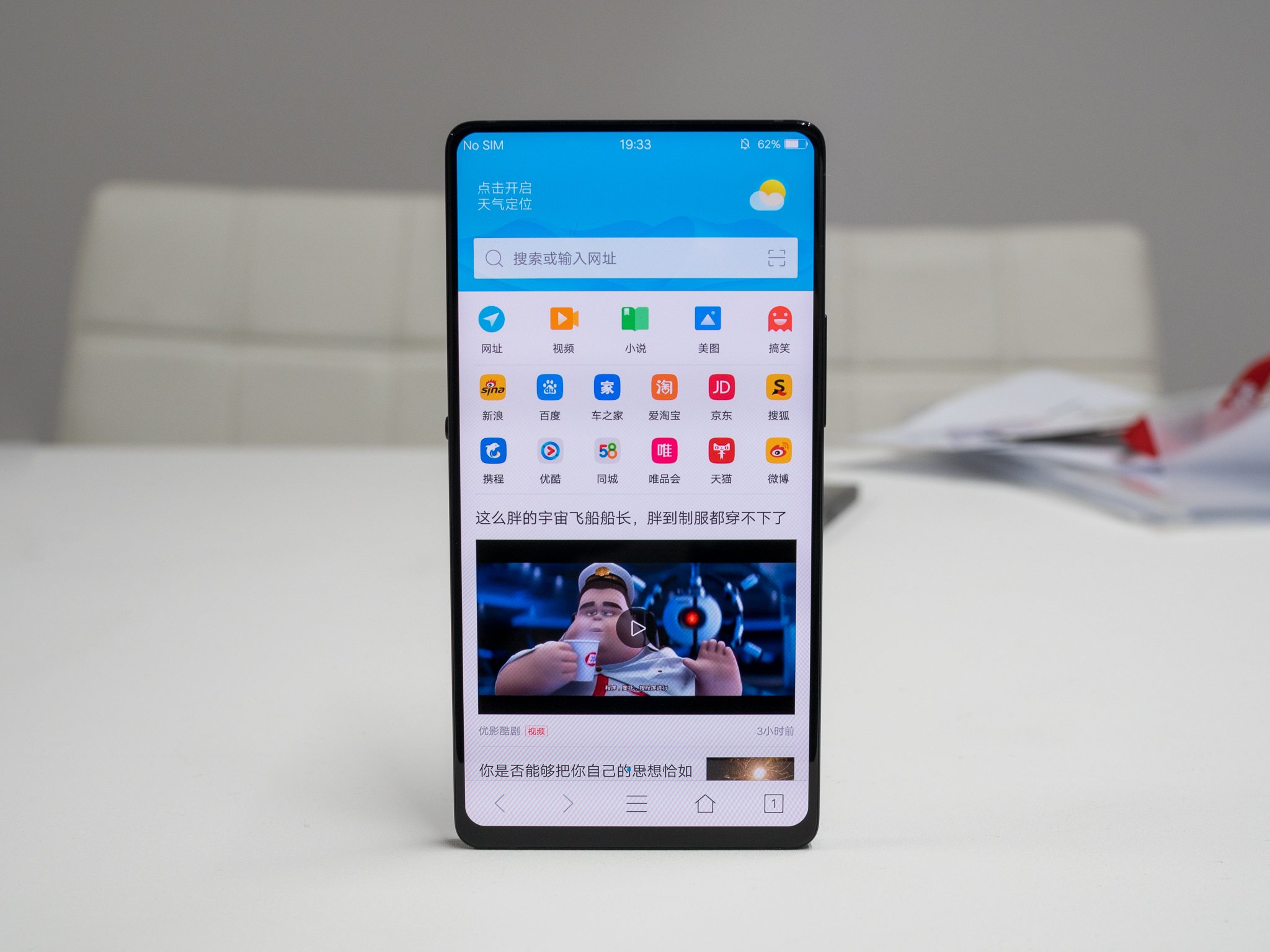Vivo's Apex concept phone has tiny bezels, pop-up camera and in-display fingerprint sensor

It's no secret that smartphone screen bezels are getting smaller. With curved displays and miniaturization of common smartphone components, the idea of a "bezel-free" phone is getting closer than ever.
Vivo has a new concept phone, dubbed Apex, that shows off the company's vision for a smartphone with tiny screen bezels — and all of the crazy technology involved with achieving the goal. It's wild to see in person and amazing when you think about everything at play here.





The Apex uses a 6-inch 18:9 flexible OLED display, and that's key for multiple reasons. Vivo doesn't use the flexibility of the panel to curve the usable surface, but rather to bend the components and connectors along the edges to reduce the bezels. On the top and sides, the bezels are tiny at 1.8 mm. The bottom bezel is currently set at 4.3 mm, but Vivo is confident it can get that one down to the same 1.8 mm in time — but even still, the Apex has a screen-to-body ratio over 90%.
This is an amazing combination of technologies to enable a future of bezel-free smartphones.
Using an OLED display also lets Vivo place fingerprint sensor technology underneath the panel, which in this case isn't a single point but instead a large swath of the screen — about one-third of the area, right where your thumbs land when holding the phone. When activated, you can place your registered finger anywhere in the area, at any angle, and have it recognized. Because this is an optical sensor it takes a beat longer to recognize than we're used to with modern capacitive-style sensors, but I think it's worth it to get this style of device.
But there's more to a smartphone that gets in the way of a bezel-free display. The new notch-style displays we've seen crop up in the last year attempt to make room for sensors, speakers and cameras — well, Vivo has solutions for those. The earpiece speaker is replaced by a vibration-based bone conduction-style speaker, which is a proven technology that works just fine. It has placed the proximity sensor underneath the display, and the ambient light sensor (for automatic screen brightness) on the top of the phone. Then there's the front-facing camera, which somewhat hilariously pops up from the top edge of the phone when you switch to the selfie mode in the camera. (Watch the video above to see it in action!) Not only does it look awesome and work flawlessly, but it's also a little privacy feature.
Many of these technologies come with compromises in terms of phone thickness and things of that sort, but not as much as you'd think. This concept phone didn't feel out of the normal realm of thickness, size or weight, and this model had a glass back, dual rear cameras, a loudspeaker, USB-C and a headphone jack. I could easily see all of these solutions designed to fit into the types of form factors we expect in smartphones today.





Unlike the phone Vivo showed off back at CES with an in-display fingerprint sensor, this Apex phone is a concept built to show off the company's new technologies and what it envisions for the future. So the final devices using these technologies, whenever that may be, won't necessarily look like this — but it really didn't feel all that unfinished to me.
Be an expert in 5 minutes
Get the latest news from Android Central, your trusted companion in the world of Android
Sure the Apex itself is a little thick and heavy, but the fact that all of this technology came together into a single device without massive compromises is extremely exciting. You can bet that Vivo, and other companies, will be releasing phones that look a whole lot like the Apex concept phone in the near future.
Andrew was an Executive Editor, U.S. at Android Central between 2012 and 2020.


